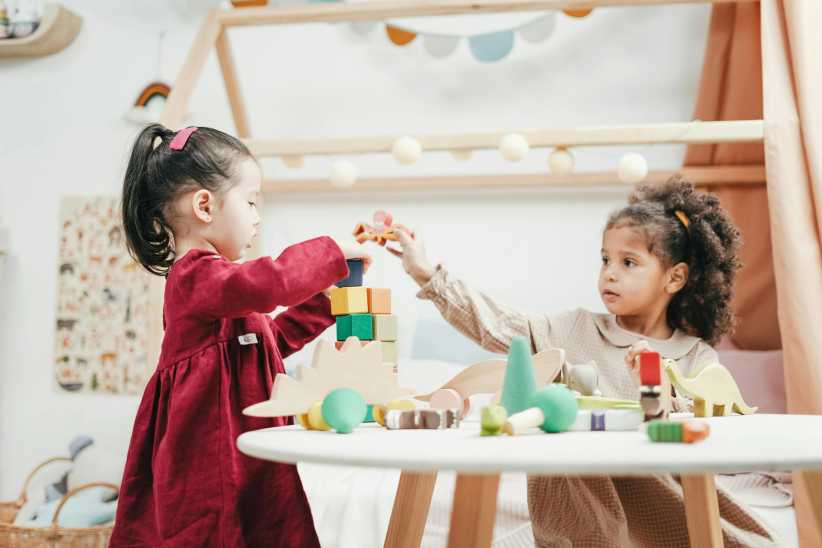Russell Granet is a Manhattan dad and the newly appointed executive director of the Lincoln Center Institute, which “plays a pro-active, dynamic part in the preparation of young minds for the world of adulthood and the demands of the workforce,” by utilizing imaginative, art-based teaching methods to train teachers, partner with schools within New York City, and host students on its New York campus. Five years ago, Granet created Arts Education Resource, an international consulting practice, following nine years as Director of Professional Development for the Center for Arts Education. I spoke with him recently about his career, his new position, and his vision for arts education.
Risa Doherty: What is the goal of the Lincoln Center Institute?
Russell Granet: Our goal is to help young people develop their minds to think like artists, not necessarily to become artists themselves. As students are exposed to the arts, they learn to forge their own mission statement and acquire core values, such as integrity, perseverance, and analytical skills, which are instrumental in any profession, and prepare them for success in the world ahead in the 21st century. There is great richness and “capacity” around a work of art. Every artist is faced with a problem: a visual artist has a blank canvas and an actor has a stage in an empty theater. Through arts education, students learn to problem solve and approach larger issues in a different way.
In one study, 60 percent of students referenced an arts experience as the most impactful experience of their education, whereas only eight percent of those students became artists. Arts education enlists them to become full citizens and learn how to work in a group (e.g. through collaborative performance). Lincoln Center Institute provides programs which help keep kids in school, changing their entire perception of learning.
RD: What age groups does Lincoln Center Institute work with?
RG: Kindergarten through 12, and college students training to be teachers. We also work with private schools, but they are not our primary mission.
RD: Are children ever too young for arts education?
RG: They are never too young. We want to be a part of the early childhood education movement, since preschoolers at 2, 3, and 4 can mesh play and education like no other time in their lives. It is a perfect opportunity to build imaginative minds.
RD: Which disciplines within the arts are included, and which ones are most effective in a pedagogical sense?
RG: All four disciplines are included: dance, music, theater, and visual art. No single one is most effective: they all have a place. The most effective will depend upon the goals and objectives for a specific program.
RD: Can you describe to me one of your programs?
RG: This fall, students from pre-K to fourth grade at PS–IS 499 in Flushing participated in an eight-week dance performance unit entitled “Fiesta Flamenca,” where they learned about how dance gestures can evoke emotion, and created their own rhythmic dance and vocal sequences, facilitated by a teaching artist. The students then attended a live performance, followed by text study in the classroom.
RD: How has an exposure to the arts affected you, personally?
RG: Exposure to the arts was the factor which kept me engaged in school. I would be a different person if I was not exposed to the arts as a child. At a very young age, theater was my entry point and positively informed all the years of education that followed. My background in theater has had an immeasurable effect on the 22 years I have spent in my current field. I developed a skill set as a result of a lifetime in the arts.
RD: Is there an ideal model for your vision which you look to?
RG: Our vision at Lincoln Center Institute is based on where we will be tomorrow. We are constantly building on the impressive work accomplished in the first 35 years of our program, as well as influential programs, such as the one at the Kennedy Center, and the other leading arts organizations throughout the world. I say “we” because I believe strongly in working with colleagues: this is a collaborative effort. It is important to be able to sustain the program and not just rely on one person’s or one organization’s ideas.
RD: Did you have an “aha” moment when you recognized a need in the field of arts education and knew this was a path for you?
RG: When I returned to New York after studying at the London Academy of Music and Dramatic Art, I became a “teaching artist,” which is someone who works for a cultural institution and teaches in the public schools. Teaching artists partner with public school educators and work with teachers to see how the arts can support the subject taught. They help students think about what they are learning in a subject, as well as what they are learning about themselves. When I started working as a teaching artist in a poor neighborhood, I was more often than not given the advice “good luck, nothing works with these kid,” which I found incredibly depressing and more importantly, wildly inaccurate. When I saw how arts education helped those kids gain self-esteem and a sense of their place in their school and in their world, I recognized how profoundly impactful the arts can be.
RD: How has your experience at Center for Arts Education working with children with disabilities affected your outlook on arts education in general?
RG: Our goal should always include exposing exposing kids with disabilities to all kinds of arts fields. There are as many learning styles as there are kids. Different kids with different disabilities have different entry points for learning. We needed to find a hook or a doorway to learning for those kids who might struggle with traditional entry points. For some of those kids, the arts are a great entry point and an opportunity for them to excel. I watched kids who normally struggle write and articulately deliver organized pieces on stage, and for me this was a defining moment. Similarly, general-education teachers need to engage children and discover their entry points. For many it is the arts. We are committed to offering all kids a complete education.
RD: How far have we come in the field of arts education?
RG: We have progressed in fits and starts. The New York City Department of Education is doing its best for 1.2 million children: it is an enormous system with equity issues. There is no “secret sauce” here at Lincoln Center Institute, and we cannot solve it alone, we need to educate parents. We need to broaden the definition of arts education: everyone has a part to play and someone needs to help orchestrate it. Because of my position, I have a unique platform afforded me by Lincoln Center Institute and it’s recognition for quality. Lincoln Center is the largest cultural institution in the world: kids belong here.
RD: What advice do you have for parents who would like more of the arts at their children’s school?
RG: I would tell them to advocate for their children, attend school events, invite local politicians to events, and volunteer to help arts educators, no matter how small the task. I would tell them it is okay to notify a school when it does not meet the New York State mandate, requiring 20 percent of the school day be devoted to arts education. In addition, children who choose the arts need to learn that there are more opportunities than just first-chair violin or prima ballerina. For every prima ballerina there are 300 people around her, supporting her, from stagecraft to marketing. We hope children will learn the value of working for an organization whose mission matches their own mission in life.
RD: How can you open the eyes of certain parents to the value of arts education, if they believe their children are not artistic and that the time is better spent on perfecting “core subjects” as a means for gaining entry to a top college?
RG: I would explain to them the full value of arts education, as part of a complete education, as a valuable interest to foster for life and as a vehicle to cultivate their child’s ability to think perceptively, innovate, and analyze situations. Parents need to know that the arts can help our young people become competitive in this generation in the field of their choice.
RD: You are the father of a 4 year old. How do you incorporate the arts into her life and how has being a parent influenced your approach to work?
RG: My daughter has already received the kind of exposure to the arts, in small as well as profound ways, that some kids won’t get in a lifetime. I do my best to help her not to take any of these opportunities for granted. Knowing the opportunities she has had and the importance of the arts in her development makes me even more passionate about bringing the arts to the kids who might not have the same type of access. I believe to my core that exposure to the arts is a right possessed by all children; it’s the driving force behind all that I hope to accomplish.
Risa C. Doherty is an attorney and award-winning freelance writer. Read more at www.risadoherty.com.























